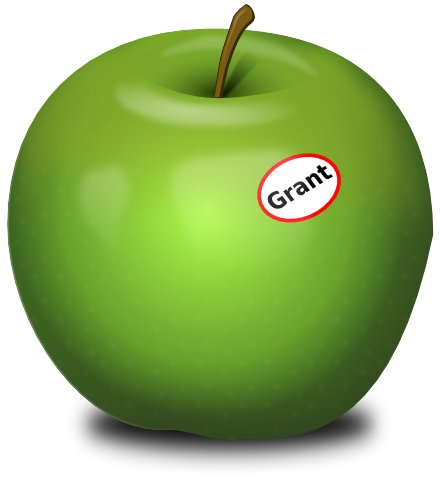How to write a grant the way I want to be taught grant writing

I get really frustrated when going to grant-writing workshops. The workshops are usually laid out structurally rather than purposefully; emphasis is placed upon each individual section of the grant in isolation (the mission and history section, the budget section) instead of concentrating on how to effectively interpret your goals and objectives for a funder. The latter obviously has a structural component, but structure is how you organize your explanation, not how you turn your thoughts into a logical argument for funding. Grant writing is persuasive writing, not just expository.
For any burgeoning grant-writer, I think there are a few, mostly simple pieces for crafting an effective grant: some structural, some logical, and some reality-checking. I call it the APPPPPLE model—the L is actually the most important (and often overlooked) part, but putting it first makes a lousy mnemonic.
The APPPPLE Model
Ask: Every grant requires an explicit request for money. “Door is requesting $20,000 from the Window Foundation to expand our lock program into two new communities serving 20,000 homes.” There is an explicit dollar amount and purpose. In my personal style, I believe that the Ask should be the only part of the grant that is written in the passive voice (everything else should be active voice, e.g. no passive verbs: am is are was were be being been).
Proofing: Editing your work means more than running it through the spell-checker. You want to check for clarity, consistency, brevity, clear topic sentences, correct citations (if you are referencing study or census data, and you should) and yes, spelling and grammar. Some methods I use for this: reading it out loud to yourself, giving it to someone else to read (both familiar and unfamiliar with your plans), or plain not looking at it for 24 hours (or more). Priority check: if you have clear topic sentences, I as a reviewer won’t have to spend too much time making sense of paragraph interiors, which means your minor spelling or grammar errors will not glare out at me.
Partnerships: You need to demonstrate some level of involvement with your community. Seriously. Grant reviewers love collaborative projects; we’re cynically aware that oftentimes they run shallow, but legitimacy exchange is key to making your case.
Page Numbers: Every page of your grant application should include page numbers and the name of your organization or uniquely named program. This goes hand in hand with…
Paperclips: Unless you are explicitly asked for multiple copies of an application, you should send one copy (with original signatures—I like .07mm blue rollerball) that is held together with a tight paperclip (preferably one with a grippy texture), or a binder clip (of size commensurate with the thickness of the grant; no 2” binderclip for a 6 page proposal). Most reviewers make multiple copies of a grant and it’s a lot easier to add a staple than it is to remove one. If they’re asking for multiple copies, staple the copies (but keep the original paperclipped)—and if they provide explicit instructions otherwise, follow them with deadly accuracy.
Priority Mail: There are legitimate purposes to overnight a grant, but I would rather see that $18 be put into a $4 Priority Mail (with delivery confirmation) and the remainder spent on celebrating the completeness of your submission.
Logic Model: The “L” should really stand for what I say to people after reading their lousy propsal. “Look”, I say, “You need to have Programs tell you what they really are going to do.” Of course, when you’re an organization of one, you can’t punt like that. So to make it clear: you need to have a well flushed out logic model. Goals, objectives, outcomes, activities, indicators, and targets: google “nonprofit logic model”. A grant is just a logic model, explained in words, with a specific ask (and some general boilerplate, like your history and Directors).
Examples: The best way to be a good grant writer is to learn by example. Get a copy of other grant writer’s proposals (ask them, many are happy to help or even mentor you—though keep an open mind that they may not actually be good themselves). Try to get copies of reviewer evaluation sheets or rubrics (google for generic rubrics); they’ll help you understand the mind of a reviewer. Lastly, become a grant reviewer: find opportunities (check your local association of philanthropic organizations) where you can review other people’s grants and find out for yourself what is effective and what isn’t (it will shock you).
And that’s it. I also really like this book: The Only Grant-Writing Book You’ll Ever Need: Top Grant Writers and Grant Givers Share Their Secrets!